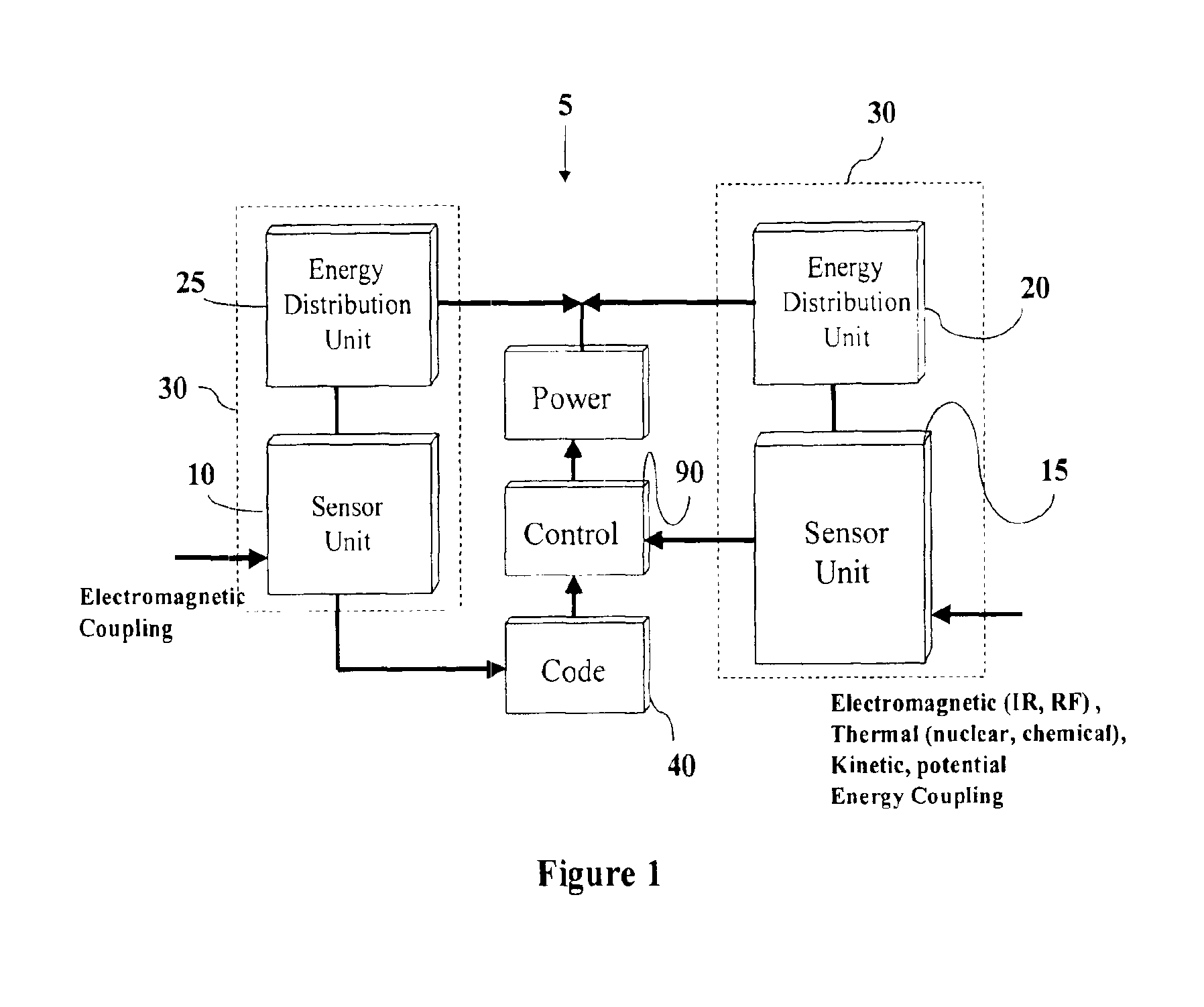Beam-forming antenna system
a beam-forming antenna and beam-forming technology, applied in the field of antennas, can solve the problems of difficult and expensive manufacturing of structures, high-frequency antennas that are often cumbersome to manufacture, and require expensive micro-machining and hand-tuning
- Summary
- Abstract
- Description
- Claims
- Application Information
AI Technical Summary
Benefits of technology
Problems solved by technology
Method used
Image
Examples
Embodiment Construction
As seen in FIG. 1, a wireless remote sensor 5 includes an antenna or antenna array 10 that converts received RF energy into electrical current that is then coupled to energy distribution unit 20. Alternatively, other sources of energy besides RF energy may be converted to electrical charge by sensor unit 15 coupled to an energy distribution unit 20. For example, sensor unit 15 may sense and convert thermal energy (such as from a nuclear or chemical reaction), kinetic energy, pressure changes, light / photonics, or other suitable energy sources. Together, each sensor unit 10 or 15 and energy distribution unit 20 forms an energy conversion unit 30. To enable active rather than passive operation, wireless remote sensor 5 may also include a battery (not illustrated).
Code unit 40 responds to the stimulation of sensor unit 10 or 15 and provides the proper code to indicate the source of the stimulation. For example, should sensor 15 be a piezoelectric transducer, impact of an object on senso...
PUM
 Login to View More
Login to View More Abstract
Description
Claims
Application Information
 Login to View More
Login to View More - R&D
- Intellectual Property
- Life Sciences
- Materials
- Tech Scout
- Unparalleled Data Quality
- Higher Quality Content
- 60% Fewer Hallucinations
Browse by: Latest US Patents, China's latest patents, Technical Efficacy Thesaurus, Application Domain, Technology Topic, Popular Technical Reports.
© 2025 PatSnap. All rights reserved.Legal|Privacy policy|Modern Slavery Act Transparency Statement|Sitemap|About US| Contact US: help@patsnap.com



